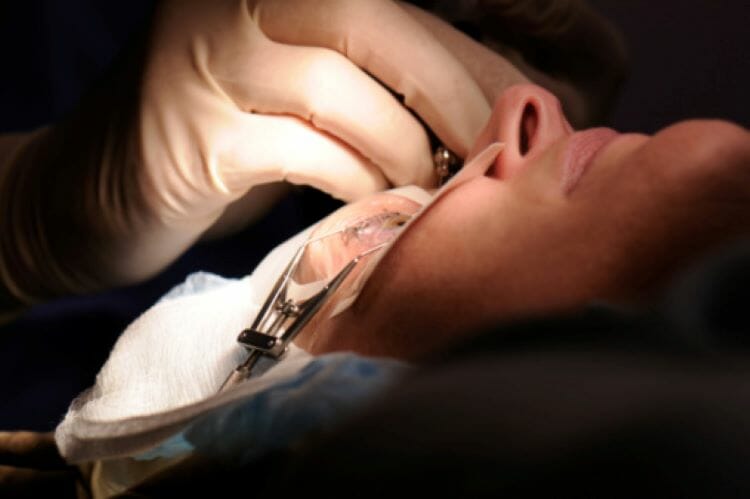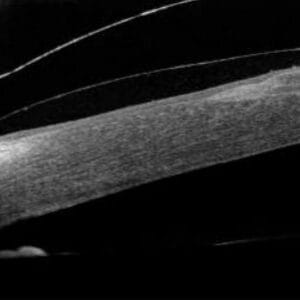September 26, 2023
In this digital age of instant access, we can stay siloed to only hear the messages we want to hear. Think about yourself. Do you view X (the platform formerly known as Twitter), Facebook, local news, cable news, The Skim, or do you just listen to that inner voice in your head? As clinicians we like to believe that our patients listen to their doctors. However, we know that this is rarely the case when the perception is Dr. Google or Dr. Bing have proven to be more reliable and much cheaper. Frankly, I have not seen a more insidious panoply of viewpoints about a medical procedure than I have with regards to refractive laser surgery.
LASIK, LASIK, LASIK!
Laser assisted stromal in-situ keratomileusis, better known as LASIK, is synonymous with almost every refractive surgical procedure in our patients’ lexicon. Patients do not differentiate photo-refractive surgery (PRK), phakic interocular lenses (ICL), small lenticule extraction (SMILE), or even cataract surgery/dysfunctional lens replacement (DLR) — it is all about the LASIK! This is in no small part due to the marketing that was pervasive in the late ’90s, or to a greater extent the fact that LASIK is a formidable procedure that is capable of correcting the spectrum of refractive errors.
Arguably, LASIK, with its wavefront-correcting capabilities and minimal invasiveness, is one of the safest and efficacious procedures available to our patients. Yet, how many patients actually know about the benefits of this modern miracle that has captured the world’s attention for almost three decades? Why are we not talking about refractive surgery?
As you read these words you are most likely thinking that it’s because of the economy, but look at Botox and CoolSculpting before you say that out loud. Or look at your patients’ phones. They upgrade them every few years. Contact lenses have become so much better. Again check yourself. Yes, we have a greater array of lenses, and we acknowledge that intolerance is most likely a symptom of dry eye, but patients still want to declutter themselves from these plastic corneal covers. Perhaps you are thinking to yourself that people love their glasses now more than ever and that nerdy chic is the new LASIK. I would argue that it’s none of the above. Rather, I feel we are in a Möbius loop of complacency in the lanes. We don’t talk about it. Patients don’t ask, so we don’t talk about it, and thus they don’t ask. We need to stop the insanity and break this cycle. Patients need to know about refractive surgery.
As eye care clinicians it is important that we advocate for our patients’ refractive options. One can look at how we treat our presbyopes as a great example. This malady is confusing to patients as well as debilitating. Are you offering executive bifocals to the silver tsunami that is cresting on your office shores? I’d say no! You talk about multifocal contacts and progressive lenses to function in this presbyopic-challenged time we are living. You offer drops that can allow for time away from the face hardware. How do you make that assertion that patients will benefit from these modalities? In the words of Hannibal Lecter, we covet the things we see every day. We are creatures of habit and gravitate to those feelings and actions that we know are consistent and successful. I can attest that refractive surgery, specifically LASIK, is a guaranteed patient pleaser. Yet, what better way to feel comfortable telling patients you have another great option than hearing it from other patients.
Patients Share Experiences with LASIK
In January 2017, JAMA published the results of the FDA’s PROWL (Patient Reported Outcomes with LASIK) studies. The 68 questions were designed to validate patients experiences with vision and LASIK. The questionnaire provided a better, more consistent collection of the patient’s reporting of visual symptoms, dry eye symptoms as well as patient satisfaction after LASIK, overall satisfaction with vision, daily functioning and well-being. This is not a post from some influencer; this revealed real-life experiences. The study had two arms — PROWL-1 with 262 active-duty Navy personnel and PROWL-2 with 312 patients from five centers across the country. This comprehensive look at patient experiences can be a spark to share with your patients. Especially when you note that in this study both groups reported high satisfaction rates, between 96% and 99%. A small but significant subset of patients — those without symptoms prior to LASIK — experienced new visual symptoms such as glare, halos, or starbursts, or mild, moderate, or severe dry eye symptoms three months after surgery. Overall, however, the prevalence of visual symptoms and dry eye decreased after having LASIK and improved over time. Yet, the most important take away from this study is that very few patients reported their symptoms impacted their daily activities or well-being.
The PRO studies are ammunition to start talking about refractive options with your patients regardless of what their refractive status may be at the time. Simply asking the patient if they are interested in liberating themselves from glasses or contacts is as easy as swiping right. Most important, as we age, the small things in our daily lives seem more bothersome and aggravating. Glasses for near are surely at the top of everyone’s list.
As someone who works in a center that evaluates and provides patients with refractive surgical options, I will tell you that you don’t have to get too deep in the weeds. If you are comfortable and confident about which procedure is best, go for it. However, instead of trying to tailor the specific procedure for each patient, leave that to the surgical center. You can simply let them know that you think they might be a candidate to get out of their correction — huzzah! Cataract surgery, clear lens extraction, is advanced to a level of refractive status. LASIK is still king, but patients have other options, share those options.





